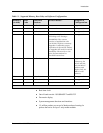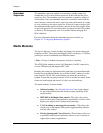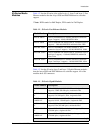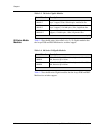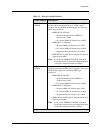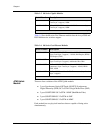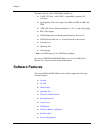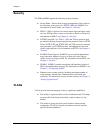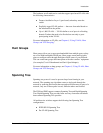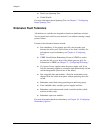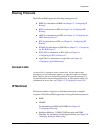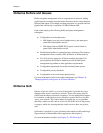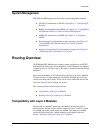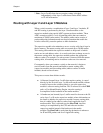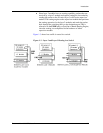
Document No. 10-300077, Issue 2 1-17
Introduction
The hardware on all multiservice switches support port-based VLANs with
the following characteristics:
■ Frames classified as Layer 1 (port-based) when they enter the
switch
■ Explicitly tagged VLAN packets — these are forwarded based on
the information in the packet.
■ Up to 1,000 VLANs — VLANs define a set of ports in a flooding
domain. Packets that need to be flooded are sent only to ports
participating in that VLAN.
For more information on VLANs, see Chapter 6, “Using VLANs, Hunt
Groups, and VTP Snooping.”
Hunt Groups
Hunt groups allow you to aggregate bandwidth from multiple ports so they
act as one high-bandwidth switch port. Hunt groups create multi-gigabit
pipes to transport traffic through the highest traffic areas of your network.
You can create hunt groups that interoperate with other vendors’ equipment
(for example, Cisco’s Etherchannel and Sun’s Quad Adapter).
For more information on hunt groups, see Chapter 6, “Using VLANs, Hunt
Groups, and VTP Snooping.”
Spanning Tree
Spanning tree protocol is used to prevent loops from forming in your
network. The spanning tree algorithm creates a single path through the
network by ensuring that if more than one path exists between two parts of a
network, only one of these paths is used, while the others are blocked.
The P580 and P882 support common Spanning Tree and Rapid Spanning
Tree. Rapid Spanning Tree provides faster recovery from network failures
than common Spanning Tree provides.
All multiservice switches support the following four Spanning Tree
configurations:
■ IEEE 802.1D Spanning Tree
■ Per-VLAN Spanning Tree



